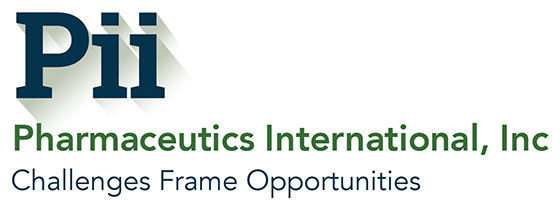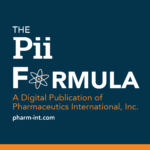5 BTN, Parenteral Drug, February 24
Parenteral Drug - 5 By The Numbers - February 2024

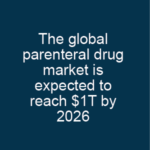
The global parenteral drug market is expected to reach $1T by 2026
According to a market research report by Fact.MR, “Parenteral Drugs Market Forecast, Trend Analysis & Competition Tracking - Global Market Insights 2019 to 2029,” the parenteral drugs market is poised to reach a staggering valuation of $802 billion by the end of the forecast period.1 The report attributes this to increased spending on biologics, the need for faster route of drug administration, increasing preference for single dose administration of vaccines and drugs, and increasing numbers of local manufacturers.
There were close to 500 parenteral drugs in the pipeline as of 2018 and the proportion of which requiring parenteral administration rose by ~2% from 2018 to 2019, according to the Fact.MR report. Also, according to the report, monoclonal antibodies (mAb) led the global market, contributing a revenue share of 20% in 2018.
According to Evaluate Pharma, the market for parenteral drugs is expected to reach $1 trillion by 2026.2 The 10 best selling drugs that year, most of them biologics, will sell $127 billion combined. And oncology will continue to dominate.2
References
- Parenteral Drugs Market Forecast, Trend Analysis & Competition Tracking - Global Market Insights 2019 to 2029.
- Evaluate Pharma® World Preview 2021 Outlook to 2026, 14th Edition, July 2021.
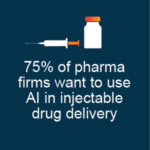 75% of pharma firms want to use AI in injectable drug delivery
75% of pharma firms want to use AI in injectable drug delivery
A new report from VisionGain1 shows that 75% of pharmaceutical organizations want to use automated solutions, which includes Artificial Intelligence (AI) more frequently, driven by injectable drug delivery. The report found that pharmaceutical production lines are challenged by customized dosages and products such as prefilled syringes (PFS). Therefore, manufacturers are searching for equipment that can handle the greater range of formats generated in smaller batch sizes, while still reducing downtime. Additionally, the popularity of injectables has increased the focus on sterility and product safety, an area where experts see AI having an impact.2
Biopharma automation enhances accuracy, precision, and efficiency, as well as enhances process control, according to the study. Automation reduces the risk of contamination, reduces the need for human intervention, and improves product purity.
As AI and machine learning techniques impact biomedical research, they provide new potential to boost drug delivery. AI can be a robust tool to establish structure–function relationships between formulation parameters and release kinetics and can help tune a drug delivery system for optimal performance.3
Reference
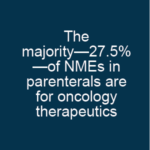
The majority—27.5%—of NMEs in parenterals are for oncology therapeutics
The parenterals market is one which is poised to continue growing, with monoclonal antibodies (MAbs) representing the largest share of the market (~21% of revenue). A thorough report by Fact.MR suggests that the global parenteral drugs market will reach or exceed $802 billion by 2029.1
Parenterals have recently represented almost half (40-50%) of New Molecular Entity (NME) drug approvals.2 The architecture is showing that companies are looking at their development timelines, margins, and advancements in therapeutic designs, and deciding more-and-more that the future is best suited to be more parenteral. This in no way besmirches the rich efficacy of other dosage forms (such as oral solid doses) but is simply a reading of the shape of the trends describing what future is likely to unfold before us.
In the parenterals world, the majority of NMEs are for oncology therapeutics (27.5%), with about 10% for infectious diseases, and about half that (~5%) for cardiovascular.2 The remainder of the statistical distribution of therapeutic areas has a fat right-tailed skew full of a variety of met and unmet disease states and conditions which are variously-populated across clinical trial phases. Oncology as a therapeutic area continues to be a rich source of drug targets, owing to the incredible phenotypic and genotypic variation found among different types of cancer and patients around the world.
References
Talk to a Pii Scientist
About Pii
Pharmaceutics International, Inc. (Pii) is a US-based contract development and manufacturing organization (CDMO) located in Hunt Valley, Maryland. The experienced scientists, engineers, and staff at Pii pride themselves on adroitly employing a phase appropriate method of drug development for the prudent use of their customer’s resources as they solve challenging problems. In addition to offering end-to-end development services, Pii manufactures a variety of dosage forms to include complex parenteral drugs and has a wealth of analytical testing capabilities. Its Hunt Valley campus has four aseptic suites with lyophilization capabilities. Our talented professionals stand ready to help!
